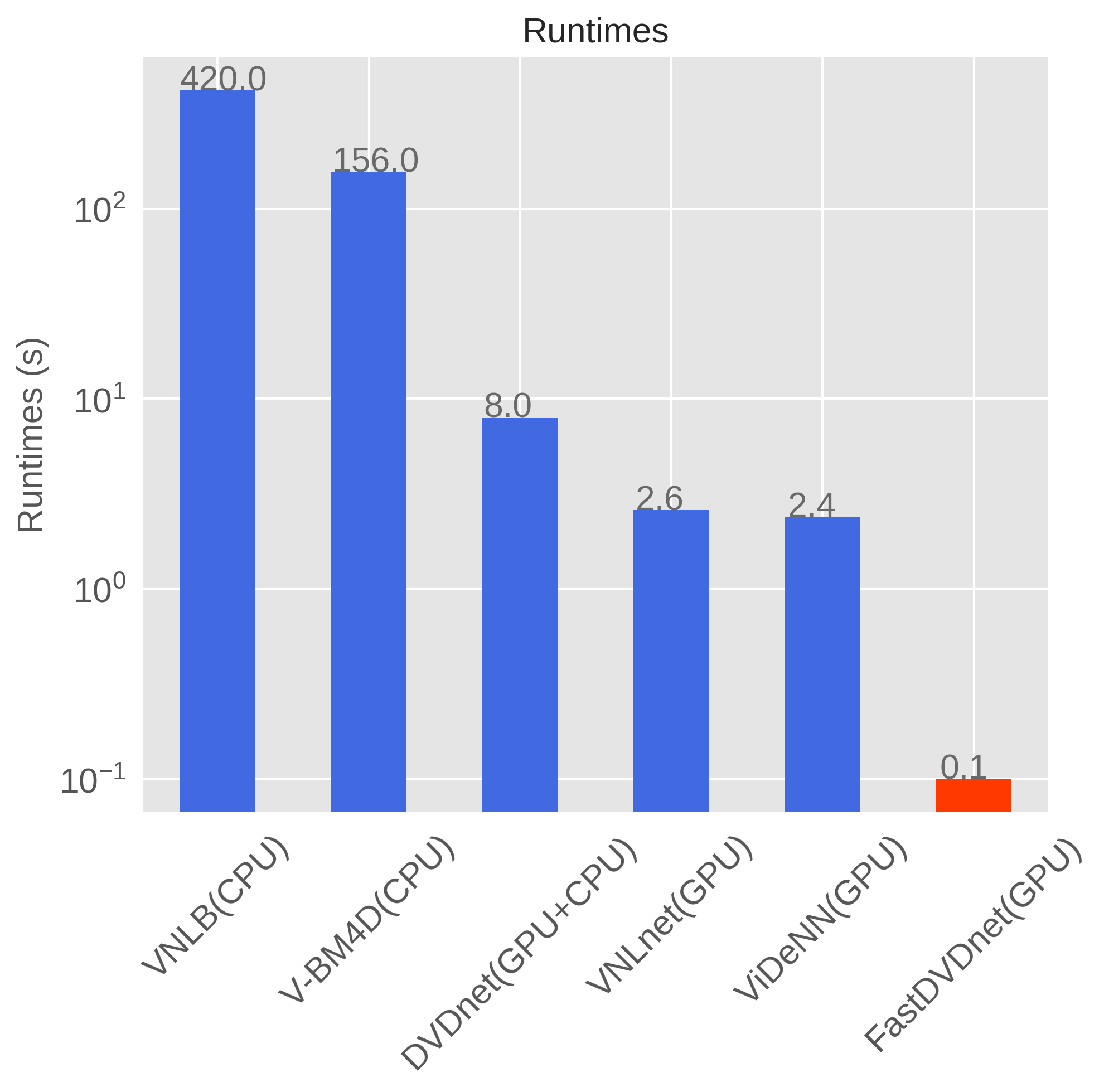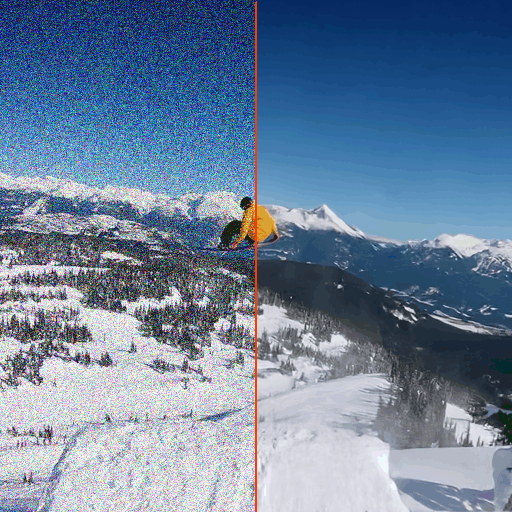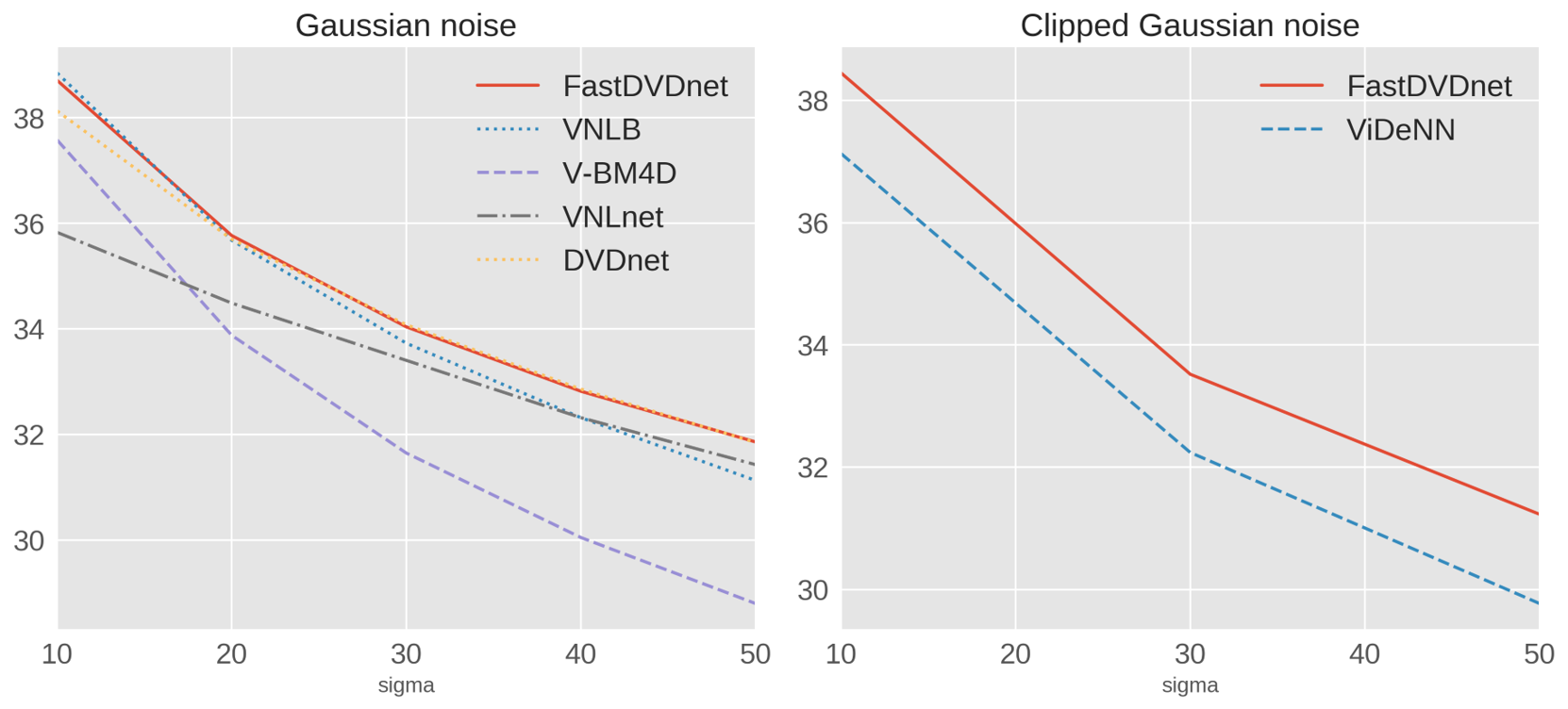FastDVDnet
A state-of-the-art, simple and fast network for Deep Video Denoising which uses no motion compensation.
NEW: Paper to be presented at CVPR2020
Previous deep video denoising algorithm: DVDnet
Overview
This source code provides a PyTorch implementation of the FastDVDnet video denoising algorithm, as in
Tassano, Matias and Delon, Julie and Veit, Thomas. "FastDVDnet: Towards Real-Time Deep Video Denoising Without Flow Estimation", arXiv preprint arXiv:1907.01361 (2019).
Video Examples
You can download several denoised sequences with our algorithm and other methods here (more videos coming soon)
Running Times
FastDVDnet is orders of magnitude faster than other state-of-the-art methods

Results


Left: Input noise sigma 40 denoised with FastDVDnet (sorry about the dithering due to gif compression)
Right: PSNRs on the DAVIS testset, Gaussian noise and clipped Gaussian noise
Architecture

Code User Guide
Dependencies
The code runs on Python +3.6. You can create a conda environment with all the dependecies by running (Thanks to Antoine Monod for the .yml file)
conda env create -f requirements.yml -n <env_name>
Note: this project needs the NVIDIA DALI package for training. The tested version of DALI is 0.10.0. If you prefer to install it yourself (supposing you have CUDA 10.0), you need to run
pip install --extra-index-url https://developer.download.nvidia.com/compute/redist/cuda/10.0 nvidia-dali==0.10.0
Testing
If you want to denoise an image sequence using the pretrained model you can execute
test_fastdvdnet.py \
--test_path <path_to_input_sequence> \
--noise_sigma 30 \
--save_path results
NOTES
- The image sequence should be stored under <path_to_input_sequence>
- The model has been trained for values of noise in [5, 55]
- run with --no_gpu to run on CPU instead of GPU
- run with --save_noisy to save noisy frames
- set max_num_fr_per_seq to set the max number of frames to load per sequence
- to denoise clipped AWGN run with --model_file model_clipped_noise.pth
- run with --help to see details on all input parameters
Training
If you want to train your own models you can execute
train_fastdvdnet.py \
--trainset_dir <path_to_input_mp4s> \
--valset_dir <path_to_val_sequences> \
--log_dir logs
NOTES
- As the dataloader in based on the DALI library, the training sequences must be provided as mp4 files, all under <path_to_input_mp4s>
- The validation sequences must be stored as image sequences in individual folders under <path_to_val_sequences>
- run with --help to see details on all input parameters




